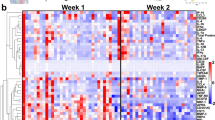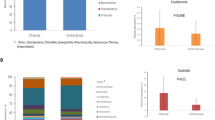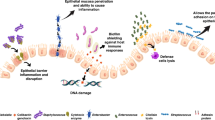Abstract
Background:
Maternal surfactant protein A (SP-A), a collectin with innate immune system function, is critical to newborn mouse survival preventing bacterial peritonitis associated with a nonhygienic environmental exposure. We hypothesized that SP-A improves newborn survival by optimizing milk immunoprotection.
Methods:
Regional (lung) and systemic (milk and serum) immunologic responses to a novel antigen, 2,4-dintirophenyl keyhole limpet hemocyanin (DNP-KLH), and to a nonhygienic environment were evaluated in wild-type (WT) and SP-A null murine dams. Cross-fostering pups assessed the impact of milk on newborn survival.
Results:
Maternal SP-A optimized antigen-specific milk secretory IgA (sIgA) production following the DNP-KLH exposure. Milk total and environment-specific sIgA production was not dependent on maternal SP-A in the nonhygienic exposure. At baseline, SP-A null milk contained physiologically meaningful increases in two proinflammatory cytokines compared with WT milk. The lack of SP-A plus the nonhygienic environmental exposure synergistically increased the number of proinflammatory cytokines contained in milk. Finally, the SP-A null genotype decreased pup survival during a nonhygienic environmental exposure.
Conclusion:
Maternal SP-A impacts milk sIgA and cytokine content, and is associated with improved newborn health.
Similar content being viewed by others
Log in or create a free account to read this content
Gain free access to this article, as well as selected content from this journal and more on nature.com
or
References
Wright JR . Immunomodulatory functions of surfactant. Physiol Rev 1997;77:931–62.
LeVine AM, Whitsett JA, Gwozdz JA, et al. Distinct effects of surfactant protein A or D deficiency during bacterial infection on the lung. J Immunol 2000;165:3934–40.
Pastva AM, Mukherjee S, Giamberardino C, et al. Lung effector memory and activated CD4+ T cells display enhanced proliferation in surfactant protein A-deficient mice during allergen-mediated inflammation. J Immunol 2011;186:2842–9.
McIntosh JC, Mervin-Blake S, Conner E, Wright JR . Surfactant protein A protects growing cells and reduces TNF-alpha activity from LPS-stimulated macrophages. Am J Physiol 1996;271(2 Pt 1):L310–9.
Nayak A, Dodagatta-Marri E, Tsolaki AG, Kishore U . An Insight into the Diverse Roles of Surfactant Proteins, SP-A and SP-D in Innate and Adaptive Immunity. Front Immunol 2012;3:131.
Gardai SJ, Xiao YQ, Dickinson M, et al. By binding SIRPalpha or calreticulin/CD91, lung collectins act as dual function surveillance molecules to suppress or enhance inflammation. Cell 2003;115:13–23.
Mukherjee S, Giamberardino C, Thomas J, et al. Surfactant protein A integrates activation signal strength to differentially modulate T cell proliferation. J Immunol 2012;188:957–67.
Alcorn JF, Wright JR . Surfactant protein A inhibits alveolar macrophage cytokine production by CD14-independent pathway. Am J Physiol Lung Cell Mol Physiol 2004;286:L129–36.
Wu Y, Adam S, Hamann L, et al. Accumulation of inhibitory kappaB-alpha as a mechanism contributing to the anti-inflammatory effects of surfactant protein-A. Am J Respir Cell Mol Biol 2004;31:587–94.
Floros J, Wang G, Mikerov AN . Genetic complexity of the human innate host defense molecules, surfactant protein A1 (SP-A1) and SP-A2–impact on function. Crit Rev Eukaryot Gene Expr 2009;19:125–37.
Jo HS, Cho SI, Chang YH, Kim BI, Choi JH . Surfactant protein A associated with respiratory distress syndrome in Korean preterm infants: evidence of ethnic difference. Neonatology 2013;103:44–7.
Pettigrew MM, Gent JF, Zhu Y, et al. Association of surfactant protein A polymorphisms with otitis media in infants at risk for asthma. BMC Med Genet 2006;7:68.
George CL, Goss KL, Meyerholz DK, Lamb FS, Snyder JM . Surfactant-associated protein A provides critical immunoprotection in neonatal mice. Infect Immun 2008;76:380–90.
Tsutsumi H, Honjo T, Nagai K, Chiba Y, Chiba S, Tsugawa S . Immunoglobulin A antibody response to respiratory syncytial virus structural proteins in colostrum and milk. J Clin Microbiol 1989;27:1949–51.
Dorosko SM, Ayres SL, Connor RI . Induction of HIV-1 MPR(649-684)-specific IgA and IgG antibodies in caprine colostrum using a peptide-based vaccine. Vaccine 2008;26:5416–22.
Newburg DS, Walker WA . Protection of the neonate by the innate immune system of developing gut and of human milk. Pediatr Res 2007;61:2–8.
George CL, White ML, Kulhankova K, et al. Early exposure to a nonhygienic environment alters pulmonary immunity and allergic responses. Am J Physiol Lung Cell Mol Physiol 2006;291:L512–22.
Garofalo R . Cytokines in human milk. J Pediatr 2010;156:Suppl 2:S36–40.
Lönnerdal B . Nutritional and physiologic significance of human milk proteins. Am J Clin Nutr 2003;77:1537S–43S.
Becker MI, De Ioannes AE, León C, Ebensperger LA . Females of the communally breeding rodent, Octodon degus, transfer antibodies to their offspring during pregnancy and lactation. J Reprod Immunol 2007;74:68–77.
Wright JR . Immunoregulatory functions of surfactant proteins. Nat Rev Immunol 2005;5:58–68.
Harrod KS, Trapnell BC, Otake K, Korfhagen TR, Whitsett JA . SP-A enhances viral clearance and inhibits inflammation after pulmonary adenoviral infection. Am J Physiol 1999;277(3 Pt 1):L580–8.
Calhoun DA, Lunoe M, Du Y, Christensen RD . Granulocyte colony-stimulating factor is present in human milk and its receptor is present in human fetal intestine. Pediatrics 2000;105:e7.
Maheshwari A, Christensen RD, Calhoun DA . ELR+ CXC chemokines in human milk. Cytokine 2003;24:91–102.
Calhoun DA, Lunøe M, Du Y, Staba SL, Christensen RD . Concentrations of granulocyte colony-stimulating factor in human milk after in vitro simulations of digestion. Pediatr Res 1999;46:767–71.
Skansén-Saphir U, Lindfors A, Andersson U . Cytokine production in mononuclear cells of human milk studied at the single-cell level. Pediatr Res 1993;34:213–6.
Sone S, Tsutsumi H, Takeuchi R, et al. Enhanced cytokine production by milk macrophages following infection with respiratory syncytial virus. J Leukoc Biol 1997;61:630–6.
Zinkernagel RM . On natural and artificial vaccinations. Annu Rev Immunol 2003;21:515–46.
Parr EL, Bozzola JJ, Parr MB . Purification and measurement of secretory IgA in mouse milk. J Immunol Methods 1995;180:147–57.
Wohlford-Lenane CL, Deetz DC, Schwartz DA . Cytokine gene expression after inhalation of corn dust. Am J Physiol 1999;276(5 Pt 1):L736–43.
Kverka M, Burianova J, Lodinova-Zadnikova R, et al. Cytokine profiling in human colostrum and milk by protein array. Clin Chem 2007;53:955–62.
Author information
Authors and Affiliations
Corresponding author
Rights and permissions
About this article
Cite this article
Gidvani, M., Theisen, E., Leduc, R. et al. Maternal surfactant protein A influences the immunoprotective properties of milk in a murine model. Pediatr Res 76, 135–141 (2014). https://doi.org/10.1038/pr.2014.75
Received:
Accepted:
Published:
Issue date:
DOI: https://doi.org/10.1038/pr.2014.75



